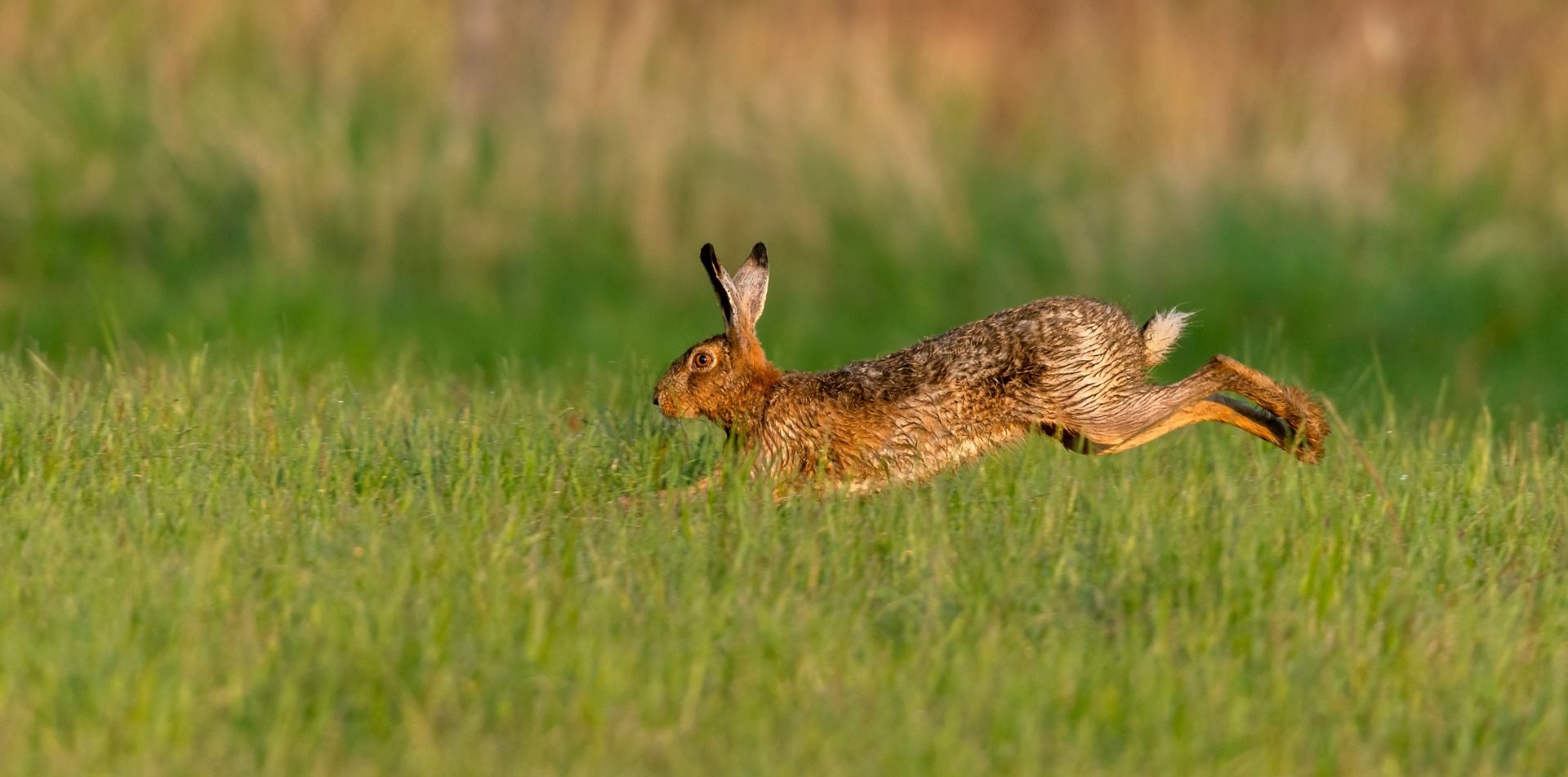
Hare Coursing
Hare coursing was finally banned in the UK in 2004, but a remarkable photograph that was shared with Forncett History Group shows that it was very much part of village life in the early 20th century. Norfolk is a major stronghold for brown hares in the UK, and they are a common sight in Forncett's fields. Nevertheless, the hare population has declined markedly since WW2 and it's now estimated that there are only about 600,000 hares in Great Britain. In the early 1900s the popuation was probably at least five times greater than it is today, and, with many more grass meadows, there would have been plenty of hares for the dogs to chase.
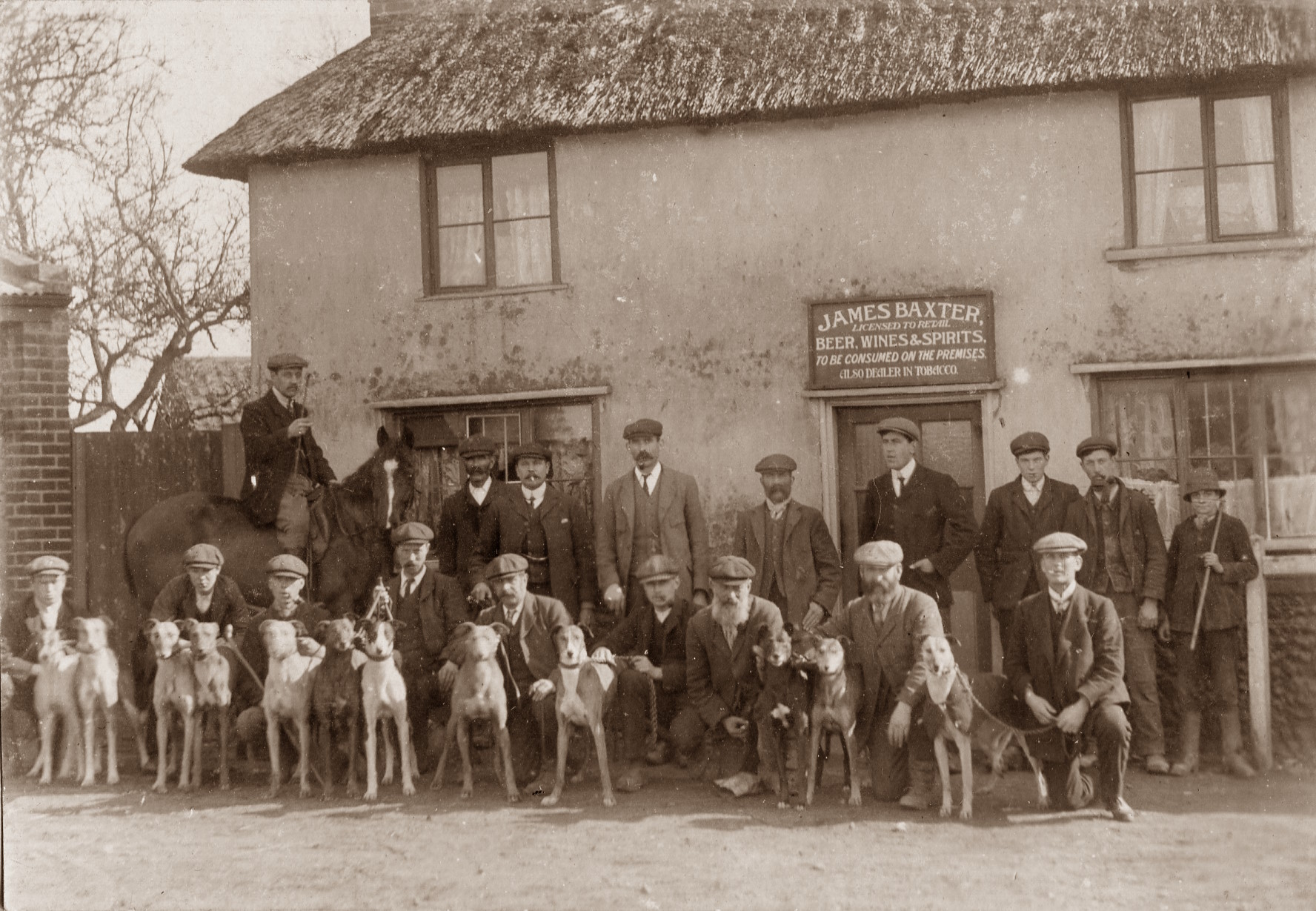
The photo was taken outside the Chequers P.H. (known locally as The Bunk) at a meeting of the Forncett Coursing fraternity. The image was the property of Jessie Ford née Gapp (1911-2002) who was born in Wattlefield and who married Maynard Ford from Tharston in 1932. Maynard's maternal grandfather, Charles Davey (1848-1915), lived at Horsenford Farm and was a member of the Forncett Coursing group. He's shown in the photo, front row 3rd from the right.
Meetings of the Forncett club were reported in the newspapers at least twice, in 1905 and in 1908, and the photo probably dates from about that time.
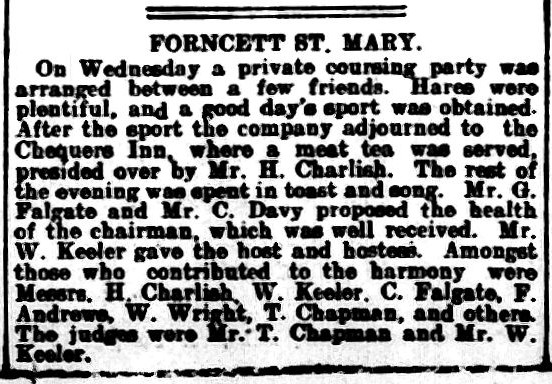
Eastern Evening News, 9th December 1905
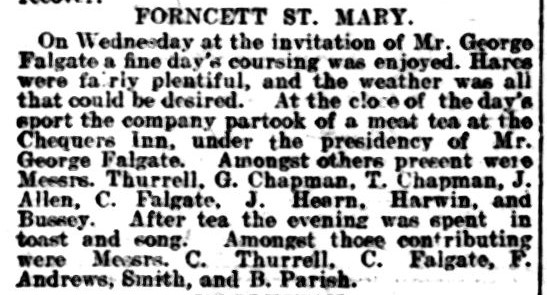
Eastern Daily Press, 8th February 1908
People have been chasing hares with dogs for centuries and greyhounds were specifically bred for coursing and hunting. The greyhound's combination of long, powerful legs, deep chest, flexible spine, and slim build allows it to reach speeds in excess of 40 mph. However, brown hares have been recorded as reaching up to 45 mph when evading predators.
Greyhounds were undoubtedly bred and kept by many Forncett families. A group of three greyhounds is shown in a photo of Gerard Chapman (who lived at Hill Farm, Forncett End) and two other gentlemen taken around 1901. Gerard and his brother, Thomas, were both members of the Forncett Coursing Club.
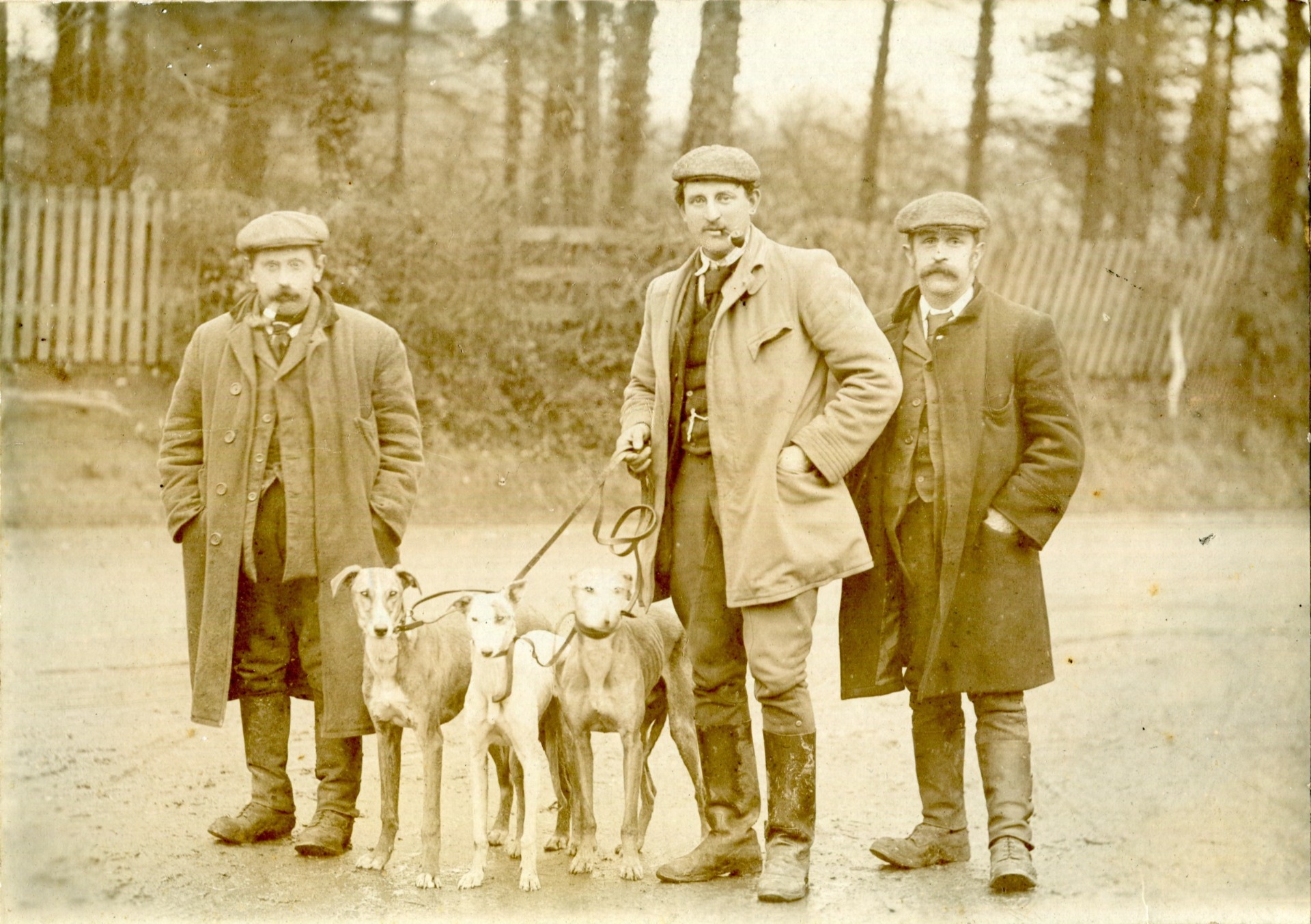
Gerard Chapman (left) and two friends
The oldest form of hare coursing simply involved two dogs chasing a hare, the winner being the dog that caught the hare, and this is probably how the men from the Chequers were competing. However, more complex coursing involved judges awarding points to the dogs on a number of aspects of performance. The first set of English rules, known as the Laws of the Leash, was drawn up around 1550, in the reign of Elizabeth I, reputedly by Thomas Howard, 4th Duke of Norfolk, and the first modern coursing club was established in Swaffham in 1776.
During the late 19th and early 20th centuries formal coursing competitions were held across East Anglia. They appear to have been conducted following rules similar to the ancient Laws of the Leash. One such meeting was held at Tacolneston Hall in 1901.
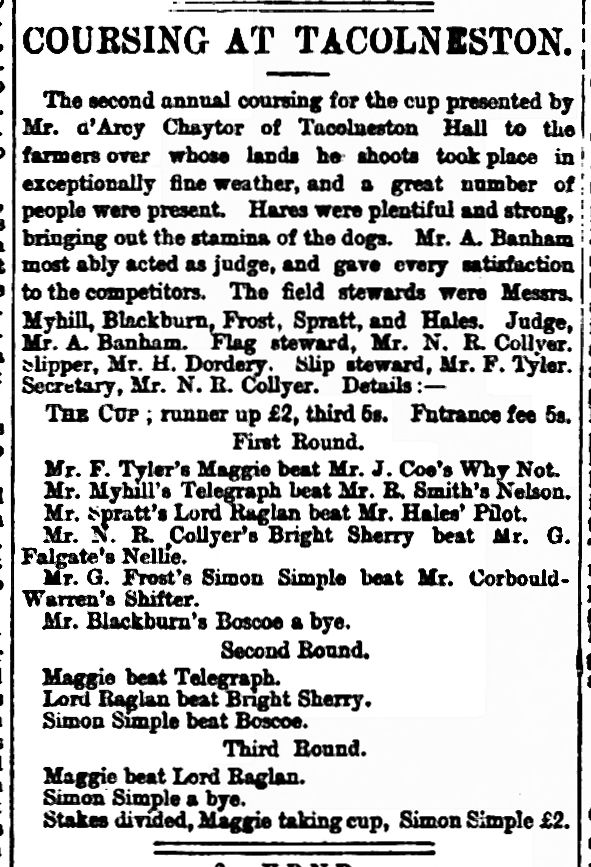
Eastern Daily Press, 6th February 1901
Some Forncett men undoubtedly bred their greyhounds for these competitions, and a very evocative picture was shown in a report from one such meeting, held at Aldeby, near Beccles, in January 1923.
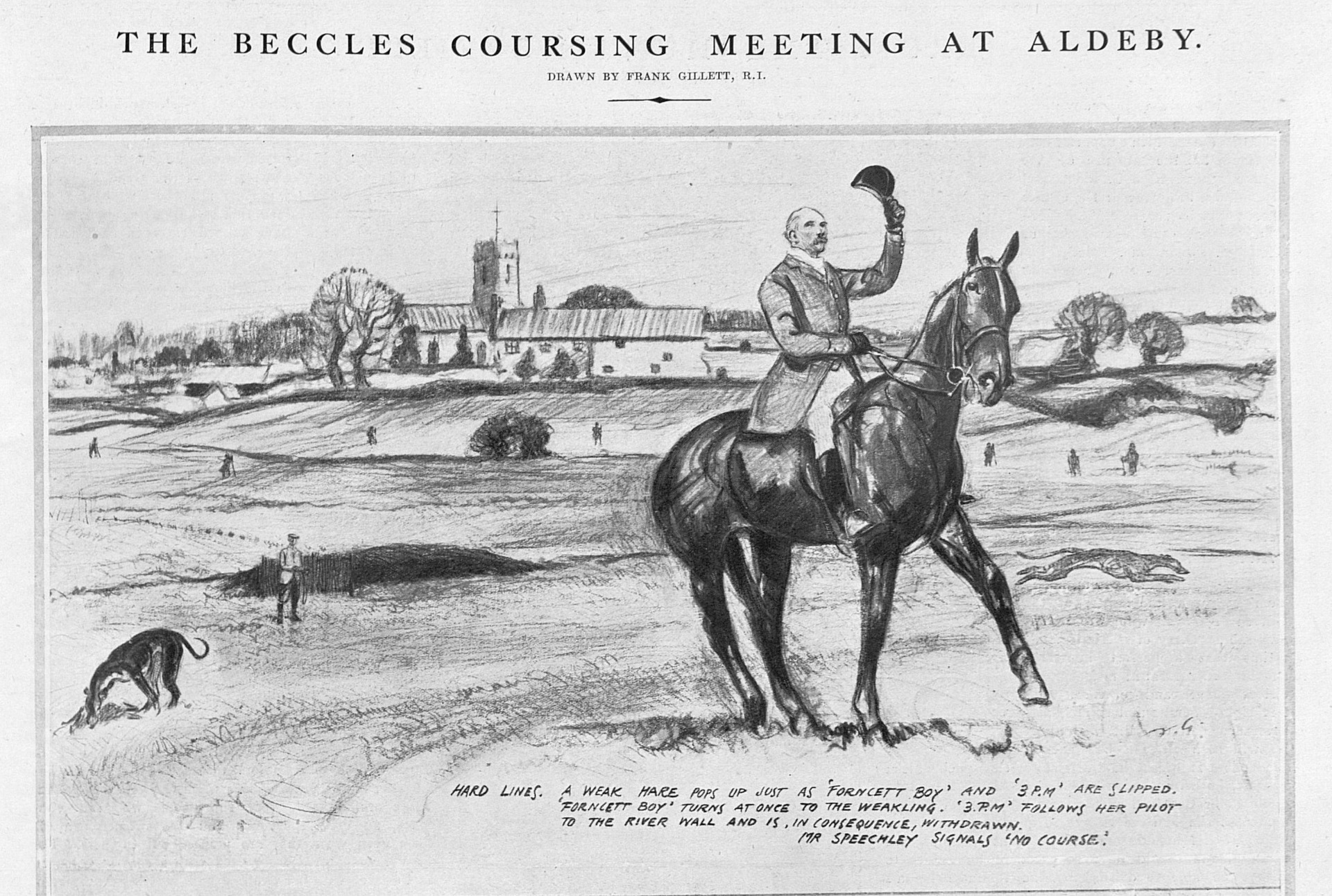
Illustrated Sporting and Drama, 6th January 1923
The text in this drawing says: "A weak hare pops up just as 'Forncett Boy' and '3 p.m.' are slipped." The article reported: "A large crowd met in fine weather for this Eastern Counties meet. The winners were Free Gear (Aldeby Stakes), Cannon II (Elm Stakes), Royal Colours (Waterheath Stakes), and Forncett Boy (Tuns Stakes)."
The successful 'Forncett Boy' was owned by George Falgate from Forncett St. Mary who was president of the Forncett club in 1908. In November 1929, George was recorded as entering two of his dogs, Forncett Duke and Forncett Mary, at a coursing event at Ranworth.
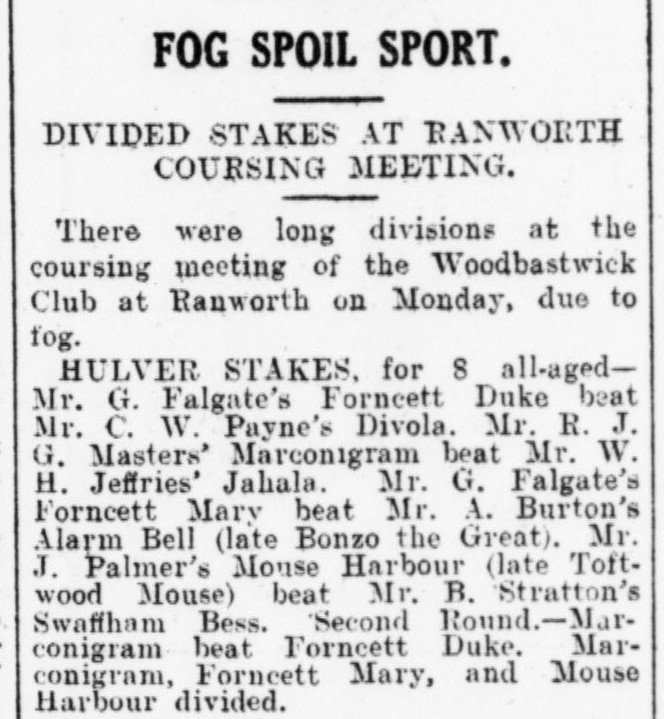
Yarmouth Independent, 23rd Nov 1929
It should be mentioned that hares were also hunted using horses and hounds. Dunston Harriers was founded in 1830 and their meets were reported regularly in the newspapers. One report, in the Norfolk News on 6th January 1906, shows that, gratifyingly, the hare did occasionally escape but it also records the amazing distances that the hare could cover during the chase!
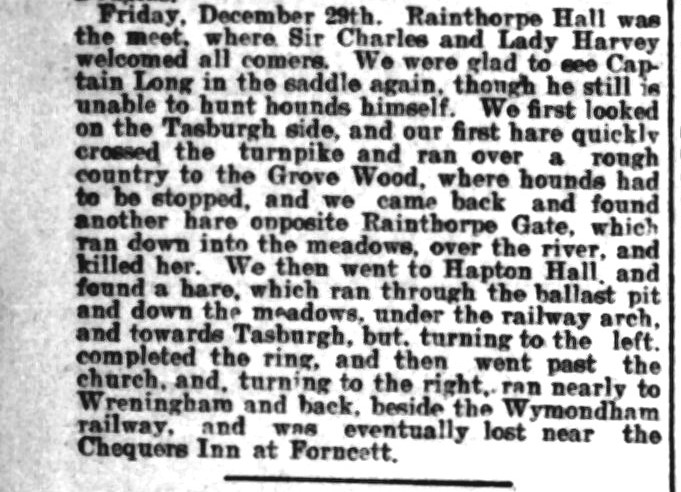
In 1926 the oval greyhound racing track and mechanical hare were introduced to Britain and by the end of 1927 there were 40 tracks in the UK. The rapid growth of greyhound tracks led to the decline of rural coursing clubs, though I don't know when such coursing events came to an end in Forncett.
With particular thanks to Sinclair Glover who provided the photograph of The Bunk and stimulated the research behind this article.
